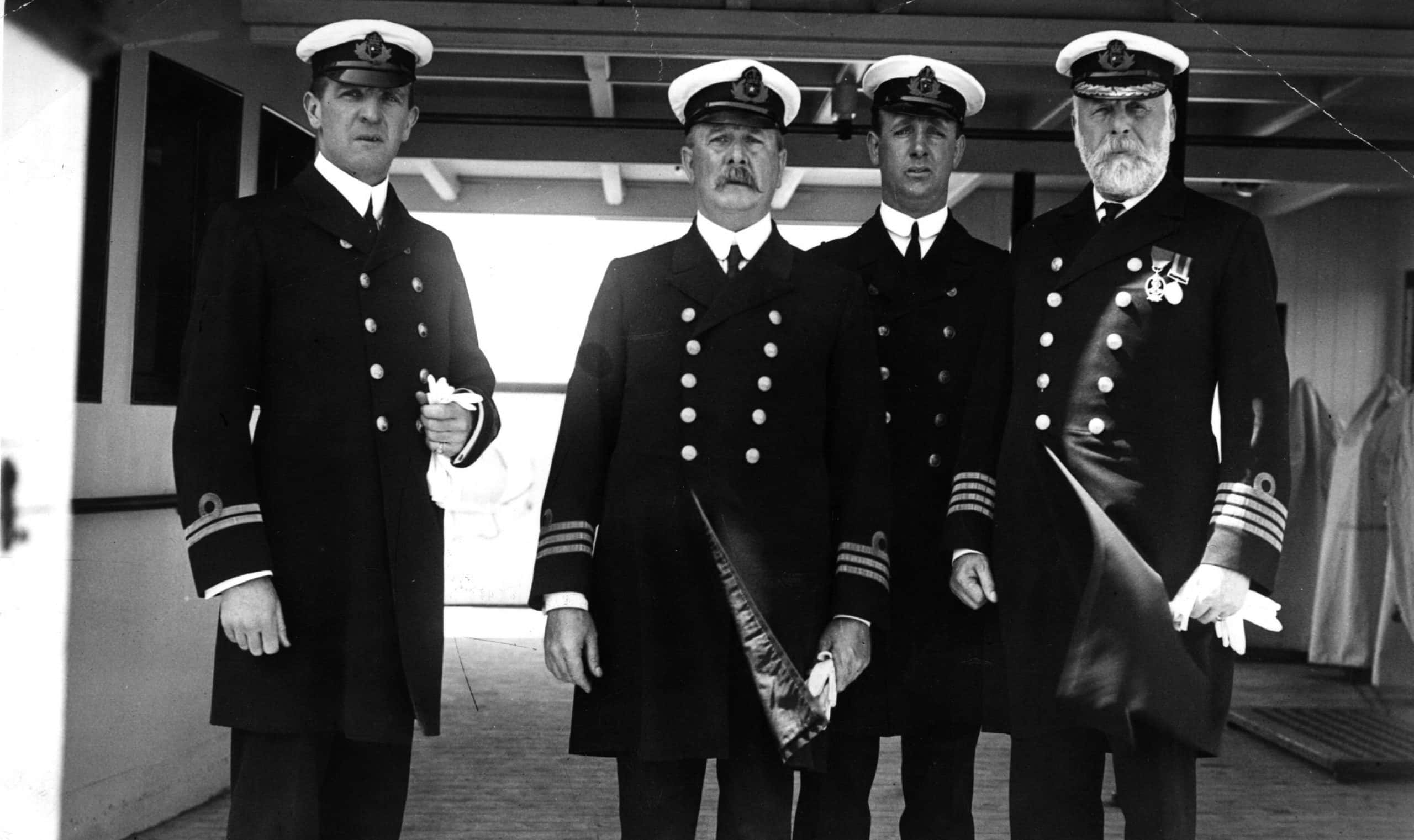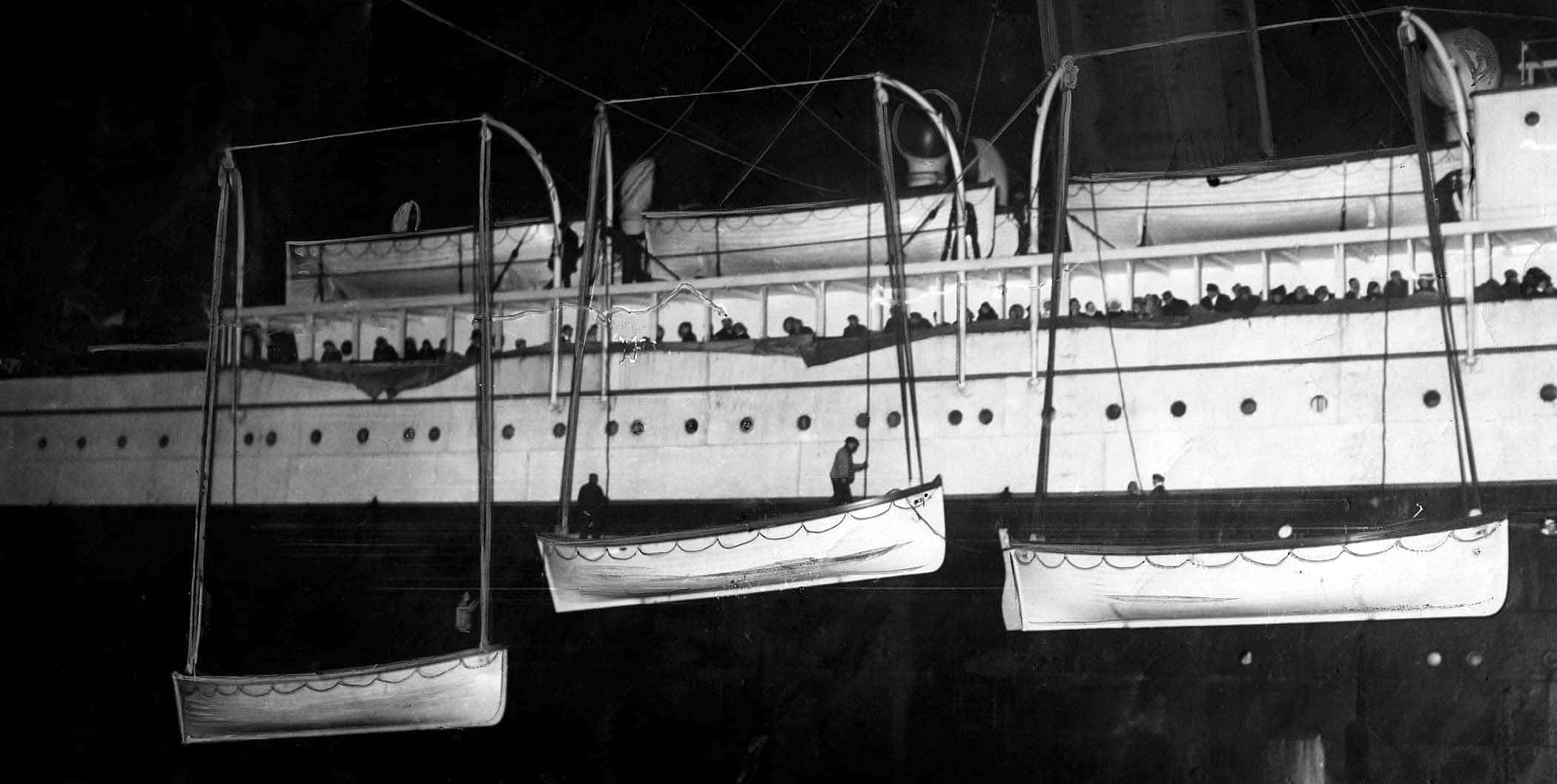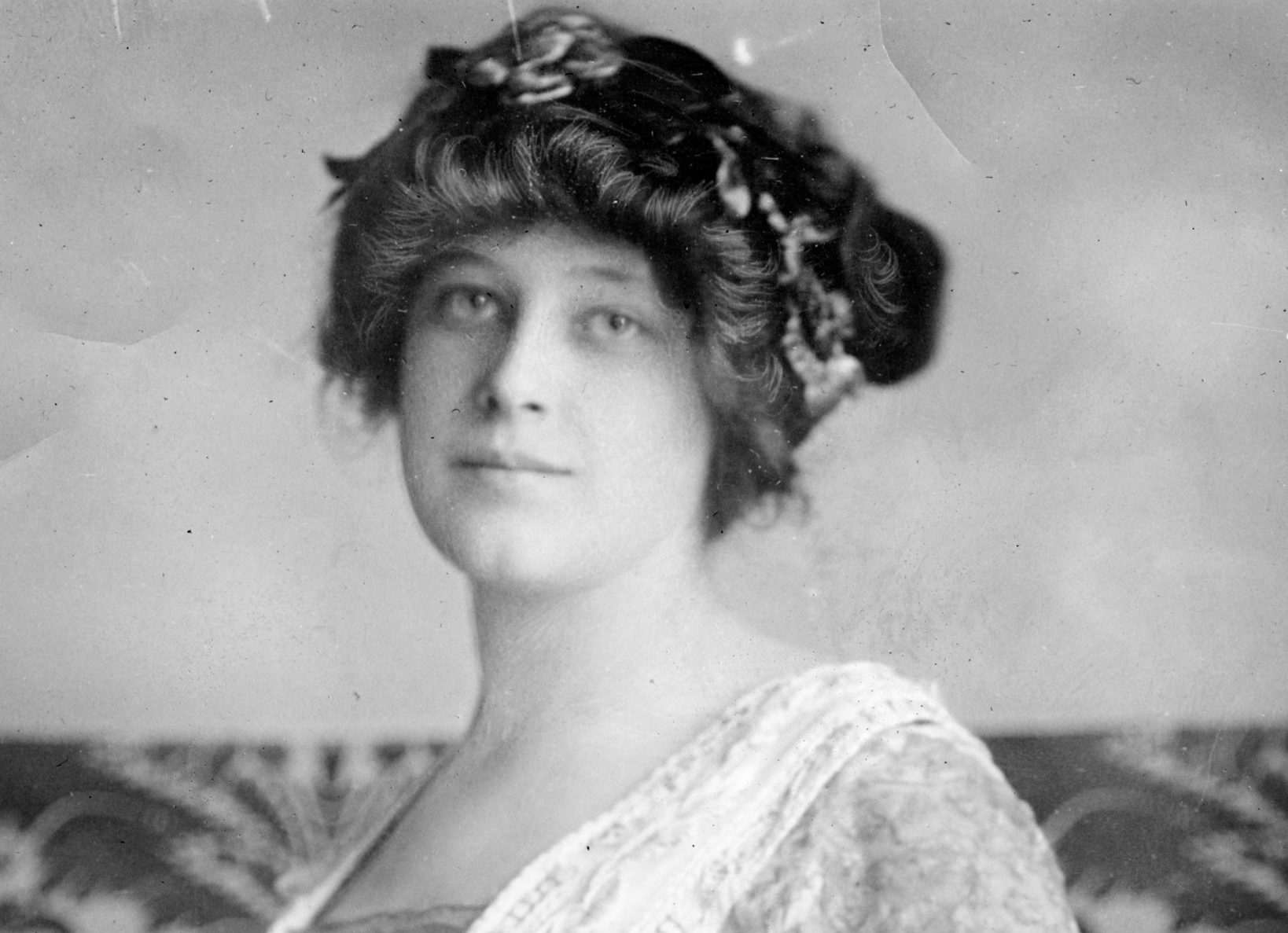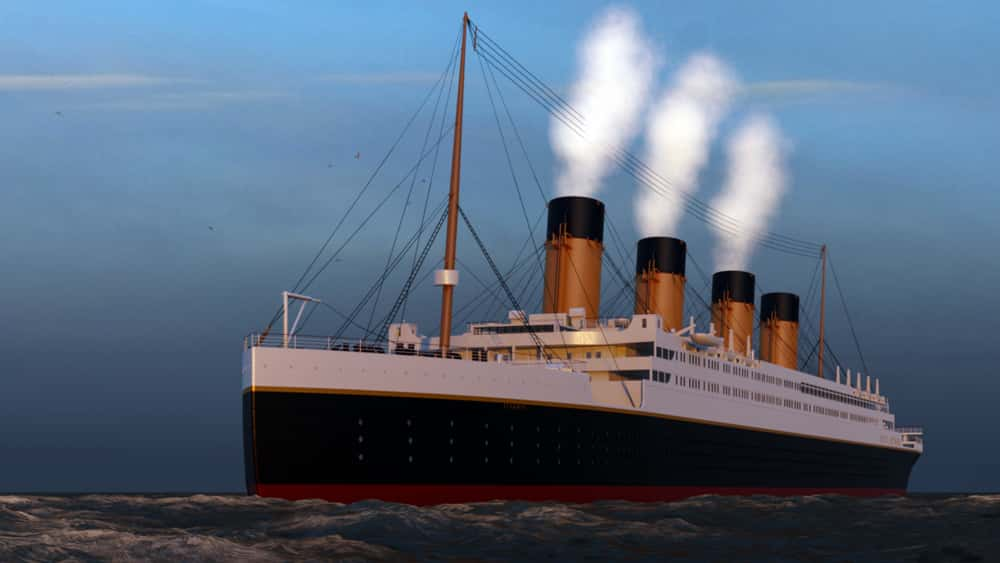On April 10, 1912, the Titanic, the largest ship in the sea, left England on her maiden voyage to New York City. Despite being touted as the safest ship ever built, four days into the journey, on the night of April 14, the ship struck an iceberg and sunk into the ocean. Here are fatal facts about the Titanic.
1. The Captain Had A Fan Club
Titanic's captain, Edward Smith, has gone down in infamy for his folly that night in April, but his real story is more complicated. Smith was actually one of the most experienced sea captains out there. He even had a cult following: Certain well-to-do passengers would refuse to go on Atlantic voyages unless he was at the helm of the ship, and they called him"The Millionaires' Captain".
Perhaps because of this, there were some very, very important people traveling on the Titanic that fateful day.

2. A Museum Magnate Was On Board
Since the Titanic was one of the most luxurious liners in the world, some of its first-class passengers were huge celebrities of their day. Among the most illustrious was Benjamin Guggenheim—yes, like the museums—who was on board with his cheeky French mistress Leontine Aubart. Still, he was nothing compared to the next guest.
3. One Man Was The Wealthiest
John Jacob Astor IV, the founder of the famed Astoria hotel in New York, was the richest man on board, even in a boat full of the world's wealthiest. When he was alive, he had a net worth of a staggering $85 million, which is billions today. Everybody had their eyes on him...but for an even more scandalous reason than his money.
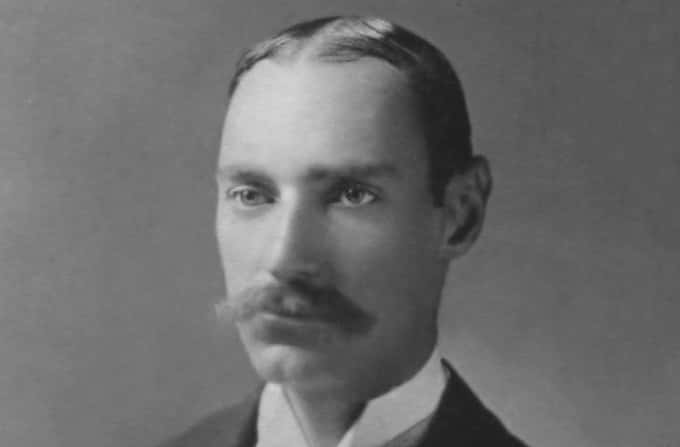 Wikipedia
Wikipedia
4. There Was A Scandal On The Ship
Astor was actually on the Titanic to travel back to America with his pregnant second wife, Madeleine. This set off a huge scandal. See, Astor had just married Madeleine in September 1911, and, at 18 years old on their wedding, the bride was almost three decades younger than him. Madeleine was even a full year younger than Astor's own son Vincent.
For all that though, the most famous person to emerge from the wreckage was a complete surprise.
5. Some Passengers Had Humble Pasts
The "Unsinkable" Molly Brown became a sensation after the Titanic, and for good reason. Born in a small three-room cottage in Missouri, she married the penniless JJ Brown for love, and only struck it rich with him years into their marriage. Staunchly "new money," Brown wasn't afraid to say or do what she felt. It would eventually help save lives.
But when Molly Brown first looked around the Titanic, she must have known people thought she was out of place.
6. It Was True Luxury
To say the Titanic was "luxury" is like saying Versailles is "kind of big". The ornate staircase, which was only for first-class passengers, descended five decks. It featured oak paneling and ironwork, and the whole staircase was lit by a huge glass dome that allowed spectacular light to flow in overhead. But that was just the beginning.
7. It Looked Like The Ritz
The designers of the Titanic took inspiration from the Ritz Hotel in London for the interiors. The facilities included a gym, a pool, a Turkish bath, a kennel for the first-class dogs, and squash courts. The ship even had its own newspaper, The Atlantic Daily Bulletin. It truly was a world unto itself on board the Titanic.
Of course, it was all about to fall apart...and in the end, its luxury was its downfall.
8. They Made A Fatal Error
The Titanic was ultimately too concerned with appearances. The massive ship was carrying around 2,208 people, which would have meant a lot of lifeboats cluttering the deck if they wanted to follow proper safety guidelines. So, to make the deck "prettier," they decided to reduce the number of lifeboats to 20 wooden lifeboats and four collapsible lifeboats.
This was only enough for only about half the passengers. But it didn't matter, because the Titanic was unsinkable, right? Wrong.
9. One Lookout Spotted Disaster
At 11:40 pm on April 15, shipmate Frederick Fleet was on the lookout for icebergs. Then suddenly, his worst nightmare happened. He spotted one straight ahead of the ship. Instantly, Fleet rang the bell in warning and telephoned the bridge to let them know they needed to avoid it. But things got complicated fast.
10. It Might Have Ended Differently
When the chief officer on the bridge received the iceberg warning, he ordered the helmsman to turn the wheel "Hard astarboard". This was actually a huge mistake. Researchers now believe that the ship could have been saved had the officer not ordered the turn. The reason why is heartbreaking.
11. It Could Have Survived
The Titanic had collision bulkheads in its bow, which means the vessel would have very likely survived a head-on impact. Experts have stated that the damages from a head-on collision would have either saved the ship from sinking entirely, or else allowed it to sink much more slowly, giving rescuers more time to save the people on board.
In other words, if they'd done nothing, they might have been alright. Then again, they made other mistakes.
12. They’d Been Warned
Poor lookout Frederick Fleet had precious little time to warn the ship. The time from when he spotted the iceberg to the time of its fatal impact was only 37 seconds. Only, there were other problems. In the end, the iceberg didn’t exactly come out of nowhere. The crew had received six ice warnings prior to the collision, all of which they ignored.
Once the iceberg hit, though, chaos reigned.
 Shutterstock
Shutterstock
13. It Had A Huge Design Flaw
The situation aboard the Titanic devolved incredibly quickly. More quickly, as it turned out, than anyone could get a handle on. Soon after the ship struck the iceberg, six forward compartments flooded. This was big trouble. Four was the maximum number that could flood without risk of the ship sinking.
It was going down...but the passengers didn't get the memo.
14. It Took Too Long
There was an agonizing 60-minute delay from the time of collision to when the first lifeboats launched. Why? Well, some people thought the alarms were just a drill and stayed warm inside. But there was a bigger issue. Even for people who believed the alarms were real, there was a lot of confusion about where to go. After all, there hadn't been any lifeboat drills.
People may not have known it then, but their fates were sealed.
 Shutterstock
Shutterstock
15. It Began To Go Bad
As a result of the delay launching the first lifeboat, no one on the crew had enough time to successfully launch the remaining lifeboats. Especially not as the passengers, once totally care-free about the situation, began to get more and more alarmed. The crew never even launched two of the collapsible lifeboats.
As people, wealthy and poor alike, approached their final hours, tragic and extraordinary things began to happen.
16. One Man Went Down Like A Gentleman
At the beginning, first-class passenger Benjamin Guggenheim thought the iceberg collision was a minor blip. But when he realized it was the end, he had an unforgettable response. First, he put on his finest clothes along with his valet. Then he descended the ship's glorious staircase, sat himself down with a cigar, and said, "We've dressed up in our best and are prepared to go down like gentlemen".
Other passengers had more heartbreaking reactions.
17. A Passenger Put His Wife First
Wealthiest passenger John Jacob Astor wasn't just going to go down like a gentleman. He was also willing to die for the sake of others. When it was clear the Titanic was sinking into the freezing Atlantic, Astor loaded his young wife Madeleine into a lifeboat. Astor was then about to get in beside her when he noticed a horrifying sight.
18. There Were Acts Of Heroism
According to an eyewitness account, just as Astor was about to join his pregnant wife, he realized there were two terrified children still on the ship and in need of saving. Unwilling to abandon people in need, Astor stepped aside and gave up his place in the boat. It was a great act of heroism, but it would also be his doom.
19. He Made A First-Class Exit
The reports of Astor's next movements are hazy. Around 1:55 am, just as Lifeboat 4 was lowered into the water, witnesses reported watching Astor standing alone on the Titanic. Then, one of the last times anyone spotted him alive, he was smoking with fellow passenger Jacques Futrelle just a half hour before the Titanic slipped into the ocean.
It sounds graceful and dignified, but his very last moments were likely much different.
20. The End Was Tragic
Survivor Phillip Mock additionally said he saw John Jacob Astor one very last time before the tycoon's death. Mock witnessed Astor and his valet huddled on a raft before they both froze and met their tragic, watery ends. Like so many others that day, it was a horrible way to go. But his sacrifice was not in vain.
21. His Act Of Heroism Was Worth It
John Jacob Astor's time on the Titanic is marked by a dark heroism, but it still was heroism. In the end, Astor's young wife Madeleine and his unborn child both survived the wreckage, with his son John Jacob Astor VI—nicknamed "The Titanic Baby"—living to the ripe old age of 79. But the elder Astor did leave something behind.
22. His Son Never Forgot Him
Astor was so wealthy that when they recovered his body, rescuers found a veritable treasure trove in his pockets—including a diamond ring and $2,440 in American notes. That wasn't all, either: Among other personal effects, they found a gold pocket watch. Astor's son Vincent claimed the memento and wore it for the rest of his life.
Astor's story, however, also teaches us a brutal lesson about the disaster.
23. The Water Wasn't What Killed Them
Although there weren't enough lifeboats on board, you might be thinking that surely there were enough lifejackets to save people from drowning in the ocean. Unfortunately, most victims that night died not from drowning, but from freezing in the icy Atlantic waters, John Jacob Astor likely included. But his is not the only story, or the only kind of end.
 Shutterstock
Shutterstock
24. A Husband And Wife Refused To Leave
Macy's department store magnates Isidor and Ida Straus were another wealthy, first-class couple traveling on the Titanic. They were also elderly, which meant they should have had the best chance of making it off the wreck. That's not what happened. When the ship started to go down, attendants ushered Ida into a lifeboat, but she refused to leave her beloved husband.
Their last moments have gone down in history.
25. They Both Went Down Together
While Ida Straus refused to leave her husband, Isidor also rejected the idea of leaving before the other men. Instead, the couple went down beside each other. As Ida said, "I will not be separated from my husband. As we have lived, so will we die, together". Witnesses last saw the pair on the deck, their arms around each other.
Yet though it was a night of great tragedy, April 14, 1912 also had its tense victories, too.
26. The Women Were Brave Too
Noel Leslie, the beautiful Countess of Rothes, more than rose to the occasion when the disaster occurred. Like many first-class women, she made it into a lifeboat—but that didn't mean the danger was over. The waters were restless and the people aboard the boat were panicked, but the Countess knew what she had to do.
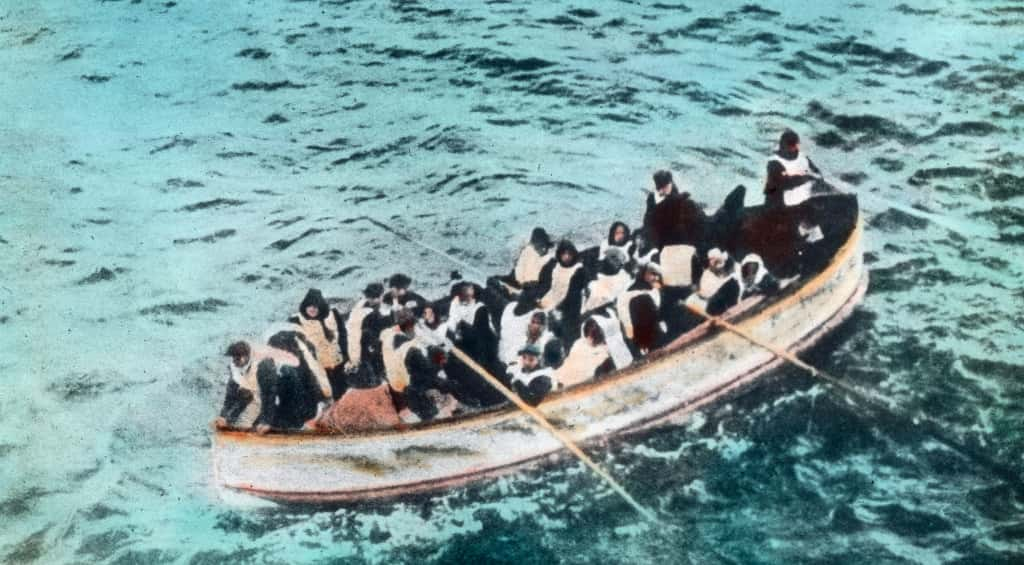 Getty Images
Getty Images
27. The Plucky Little Countess
As her lifeboat dipped into choppy waters, the cool-headed Countess grabbed the tiller and helped steer and row the vessel to safety even as the Titanic sunk behind her. While steering, Noel only paused her duties to comfort another passenger, a Spanish newlywed who had lost her husband in the wreck.
The surviving crew started calling Noel Leslie "the plucky little countess," and even gave her the brass number plate from her lifeboat as a token of their appreciation. But the Titanic also had its fair share of strange stories.
 Wikipedia
Wikipedia
28. The Baker Got Tipsy
The ship’s baker, Charles Joughin, had an utterly bizarre survival story. When he found out the ship was doomed, he first sent men to get provisions from the bakery to the lifeboats on deck. But once away from the crowds, he began partaking in the ship’s well-stocked bar. Known to enjoy his whiskey, and figuring he was about to die, he got intoxicated. This had a truly odd twist.
29. Drinking Saved His Life
When the ship went down, most people likely thought that Joughin perished in those icy waters. Nope. Rescuers found him after about two hours, treading water and showing minimal health problems. Alcohol generally increases your risk of hypothermia, but there is some evidence that it helps slow heat loss as well. It certainly worked for the baker.
There are other tales from that night that seem too tragic to be true—but they are.
30. There Were Dogs On Board
First-class passengers were allowed to bring their dogs on the RMS Titanic, and there were 12 confirmed dogs on board, including a Fox Terrier, a French Poodle, a French Bulldog, and John Jacob Astor’s Airedale Terrier, Kitty. Some pups got happy ends: Three of the smaller dogs were snuck onto the lifeboats, and made it safely to New York.
But one in particular met a fate as tragic as All Dogs Go to Heaven.
31. A Woman Sacrificed Herself For Her Dog
One of the most famous legends of the Titanic disaster is that of Anne Elizabeth Isham. Legend says that she refused to leave the ship without her beloved Great Dane, who crew members had deemed too big for a lifeboat. Instead, Isham made an incredible sacrifice. She allegedly stayed behind rather than leave him.
Later, authorities found the body of a woman holding a large dog.
Pixabay
32. The Band Played On
Everybody knows the story of how the ship's band played on to keep spirits up. Incredibly, this is true; all eight members of the orchestra played their instruments to the bitter end. Quite literally, as they heroically went down with the ship. Then again, by the time that this happened, they had witnessed a true nightmare.
33. The Crew Had A Crucial Failure
As the ship kept sinking, crew kept filling up the lifeboats. Or, that was the plan. When all of the lifeboats did finally leave the Titanic, they weren't full. Each boat could safely carry approximately 70 people, but senior surviving officer Charles Lightoller claimed that he could not have filled the boats to capacity without the mechanism holding them collapsing. There were other complications, too.
34. The Crowd Got Desperate
Passengers were utterly frantic at the very end, which didn't help crew members when it came to putting them in the few lifeboats they had. When Collapsible B Lifeboat floated away upside down, people tried to right it, but were unsuccessful. Just 30 stubborn people, clinging to life, managed to survive by standing on top of the upturned boat.
 Picryl
Picryl
35. She Made A Feisty Demand
Molly Brown was lucky enough to snag Lifeboat No 6, but crew members had to drag her away from helping other passengers and push her in it. Her next actions earned her a place in history. Brown began to argue with Quartermaster Robert Hichens, who was in charge of the boat, reportedly urging him and her fellow passengers to go back toward the wreckage to save more people.
36. She Tried To Take Control
Sadly, Hichens refused to listen to Brown, saying that the poor souls in the waters might try to get in and drag the boat down, dooming everyone. It's unclear whether Brown was ever able to get the boat to turn around, but we do know she was pretty feisty about it. She took an oar and tried to steer the boat back by herself, and people heard her loudly threatening to throw Hichens overboard.
Finally, as the survivors watched the ship go down and water slowly grow quiet, they began to wonder: Who would save them now?
37. There Was No One To Save Them
Even the Titanic's rescue story was harrowing. The Titanic sent out multiple distress signals through multiple channels as the ship went down, but there was no other vessel near enough to reach them in time. As it was, it took until 4:00 am—over four hours since the iceberg first hit—for the RMS Carpathia to come save the people in lifeboats and any extremely lucky survivors in the water.
When the next day dawned, people looked for someone to blame.
38. They Had Terrible Luck
In many ways, the Titanic disaster happened because of a streak of bad luck, ending with the iceberg that hit. You see, in April 1912, there were 300 icebergs in the North Atlantic Shipping lanes—this was the most seen in the route between Europe and North America in half a century. It really was wrong place, wrong time. That's not all, either.
 Wikimedia.Commons
Wikimedia.Commons
39. One Thing Might Have Saved Them
As details about the tragedy emerged, researchers discovered that the liner Californian had been less than 20 miles away from the Titanic when it was sinking, but failed to hear its distress call because the radio operator was off-duty. Again and again, just one moment of good luck might have saved so many people, but the Titanic couldn't catch a break.
 Wikipedia
Wikipedia
40. Molly Brown Earned Her Nickname
Molly Brown was one of the most famous Titanic survivors, and her moniker reportedly came from her words following the Titanic’s sinking. When reporters interviewed her about the disaster, Brown had a legendary reply. She allegedly stated, "Typical Brown luck. We’re unsinkable". The phrasing stuck.
41. There Was An Eerie Coincidence
In 1985, a team of researchers found the wreck of the Titanic lying on the ocean floor. This is where things get eerie. Coincidentally, the discovery came just before 2:20am, which was the exact time the ocean liner sank. Several earlier attempts to locate the ship had been made since its sinking, all of them coming up empty-handed.
Thanks to this team, we now know exactly where the titanic sank.
42. The Damage Was Surprising
When the Titanic sank, experts widely believed that the iceberg had caused a 300-foot gash along the side of the ship. Once they discovered the wreck in 1985, the ship told a different story. The actual damage was clearly visible. The ship sustained six separate tears totalling just 15 square feet. That was all it took.
43. There Were A Lucky Few
For one reason or another, several famous people had tickets for the Titanic but didn’t sail on that fateful voyage. George W Vanderbilt and his wife canceled because someone in their family was worried that "so many things can go wrong on a maiden voyage". Well...can't really say they were wrong about that one.
 Wikipedia
Wikipedia
44. There Is A Prophetic Novel About It
Some things are just fated. Creepily enough, some say that an 1898 novel predicted the wreck of the Titanic 14 years before she took her maiden voyage. Morgan Robertson's novel Futility tells the tale of an ocean liner named Titan that strikes an iceberg the first time she even hits the water. Sound familiar?
45. It Was An Anomaly
In the 10 years before the Titanic disaster, White Star Line had carried over 2 million passengers, and only experienced two fatalities.
46. It Changed The Law
One positive outcome of the Titanic disaster was an overhaul to sea safety rules. After the tragedy, the first international Convention for Safety of Life at Sea overhauled the rules and regulations of sea travel to make sure this never happened again.
 Wikipedia
Wikipedia
47. It Was Enormous
The Titanic was the world’s largest passenger ship at the time. It measured 882 feet in length, and was the largest man-made moving object on Earth.
48. They Betrayed Third-Class Passengers
New documents about the Titanic disaster reveal a chilling story. According to these documents, rescue crews doing damage control after the wreck tossed the bodies of third-class passengers into the sea in order to prioritize first and second-class remains. It's all laid out in disturbing detail in a series of telegrams between a recovery ship and the White Star Line.
So while second- and first-class bodies were returned to their loved ones, many third-class families were left in the dark.
49. The Captain Made A Terrible Decision
During the initial investigations into the cause of the Titanic disaster, investigators blamed Captain Edward Smith for going too fast in dangerous waters. While Smith couldn't possibly have predicted exactly what happened, he could have reduced the ship’s speed as a precaution, particularly after getting warnings about icebergs. But did he? Nope.
50. The Captain Went Down With His Ship
Captain Edward Smith went down with the Titanic, and his last words were heartbreaking. He said to his crew, "Well boys, do your best for the women and children, and look out for yourselves". People last saw Smith on the bridge minutes before the ship sank, and experts believe he must have gone directly under the waves and drowned. But there is another side to the story.
 Titanic, 1997, Paramount Pictures
Titanic, 1997, Paramount Pictures
51. He Failed When It Mattered Most
People are divided to this day about whether or not Captain Edward Smith was a villain or a victim. While some portray his mistakes that fateful day as understandable and his subsequent actions as heroic, others reveal a darker side. According to some reports, Smith became paralyzed with fear when he realized the situation, and did little to save the souls on his ship.
 Getty Images
Getty Images
For more information about that fateful day, check out our article on When Did The Titanic Sink? and "The Unsinkable" Molly Brown.
Sources: 1, 2, 3, 4, 5, 6, 7, 8, 9, 10, 11, 12, 13, 14, 15, 16, 17, 18, 19, 20, 21, 22, 23, 24, 25, 26, 27, 28








